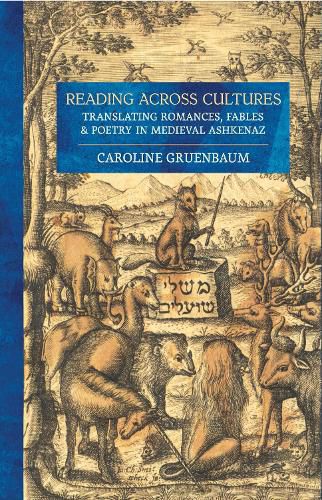Readings Newsletter
Become a Readings Member to make your shopping experience even easier.
Sign in or sign up for free!
You’re not far away from qualifying for FREE standard shipping within Australia
You’ve qualified for FREE standard shipping within Australia
The cart is loading…






Reading across Cultures explores a body of innovative Jewish literary works from the Middle Ages. In late twelfth- and thirteenth-century Ashkenaz-the Jewish communities in northern France, Germany, and England-Jewish authors translated several Old French and German stories into Hebrew. These stories are distinctly non-Jewish, drawing on the Christian romances of King Arthur and Alexander the Great and the classical fables of Aesop.
Caroline Gruenbaum argues that these translations-rather than adapting stories that reflected Jewish religious or cultural practice-represent a body of secular Hebrew literature in Ashkenaz and evidence of a shared literary culture between Jews and Christians in medieval Europe. Reading Hebrew animal fables, folktales, and chivalric romance, Gruenbaum describes an intellectual climate that allowed the literati of medieval Ashkenaz to read across cultures. In these translations, produced by medieval Jews for entertainment and for wisdom, Gruenbaum finds a new literary awakening in Ashkenaz.
$9.00 standard shipping within Australia
FREE standard shipping within Australia for orders over $100.00
Express & International shipping calculated at checkout
Reading across Cultures explores a body of innovative Jewish literary works from the Middle Ages. In late twelfth- and thirteenth-century Ashkenaz-the Jewish communities in northern France, Germany, and England-Jewish authors translated several Old French and German stories into Hebrew. These stories are distinctly non-Jewish, drawing on the Christian romances of King Arthur and Alexander the Great and the classical fables of Aesop.
Caroline Gruenbaum argues that these translations-rather than adapting stories that reflected Jewish religious or cultural practice-represent a body of secular Hebrew literature in Ashkenaz and evidence of a shared literary culture between Jews and Christians in medieval Europe. Reading Hebrew animal fables, folktales, and chivalric romance, Gruenbaum describes an intellectual climate that allowed the literati of medieval Ashkenaz to read across cultures. In these translations, produced by medieval Jews for entertainment and for wisdom, Gruenbaum finds a new literary awakening in Ashkenaz.